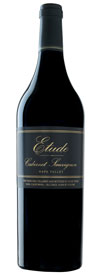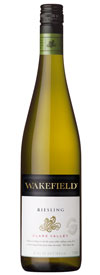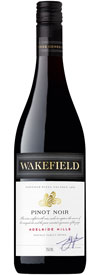Robert Oatley is making tasty wines from all over Australia
Although the Robert Oatley Vineyards is located in Mudgee, they don’t limit themselves to fruit from that region. Instead, they look throughout Australia and source grape varieties in the Australian regions where they thrive most. They use sustainable practices and strive to be as organic as possible. They produce a wide swath of wines that show off good varietal character. I recently tasted through a number of their current releases and found a lot to like. Here are some thoughts on a few of my favorites.
Robert Oatley 2014 Signature Series Margaret River Sauvignon Blanc ($18)
Lemon zest aromas inform the welcoming nose; subtle bits of grass and white pepper are present as well. The palate is gently layered with white peach and other stone fruits. A hint of marzipan emerges on the finish, alongside bits of sour yellow melon and grapefruit. This Sauvignon Blanc has a really soft and lovely mouth-feel. It goes down easy and features lots of solid character. It also rides the middle of the Sauvignon Blanc line; it’s not super citrusy, overly grassy, nor extremely tropical. Instead, it draws bits from all of those camps.
Robert Oatley 2014 Signature Series Margaret River Chardonnay ($18)
Anjou pear and wisps of white peach emerge from the nose here. The palate is fruit-forward, while remaining proportionate and lovely. Lots of orchard and stone fruit characteristics are joined by subtle hints of spice. Bits of limestone are present on the above-average finish. There is a nice weight and terrific feel to this wine; I simply didn’t want to put it down. It’s a really expressive and clean Chardonnay that is gently accented by oak.

Robert Oatley 2014 Signature Series McLaren Vale GSM ($18)
This wine is a blend of Grenache (60 percent), Shiraz (30 percent) and Mourvedre (10 percent). There’s a gentle bit of pleasing tar on the nose, alongside a potpourri of red fruit aromas. Blackberry and forest floor elements are in evidence throughout the palate, while earth, minerals and hints of smoked meat are evident on the finish — which is well above average for the price point. This is a fantastic food wine; pair it with all but the lightest or heartiest fare.
Robert Oatley 2014 Signature Series McLaren Vale Shiraz ($18)
Plum, violet and blueberry aromas are tinged by a tiny hint of charcoal on the lovely nose. There’s a ton of black cherry and pepper spice on the palate, along with more blueberry notes. Bits of espresso and sour black fruits mark the finish. Fleshy tannins and firm acid provide good structure. You’ll have a hard time finding a better wine to pair with a burger.
Robert Oatley 2013 Signature Series Margaret River Cabernet Sauvignon ($18)
Toast, vanilla, sage and dark berry fruits are all present on the nose here. The palate is stuffed with black fruit flavors, spice and savory herbs. Bits of earth, black cherry and a dusting of cocoa are all present on the finish.
This quintet of wines from Robert Oatley impresses with the quality in the bottle at under $20. In each case, the wine is typical of the variety in question. In the case of the blend, it’s a pretty classic example of a GSM at a very agreeable price. Besides those qualities, these wines are connected by a purity of fruit and lovely textural elements that keep them on the same stylistic page. These are wines that most can afford to drink on a regular basis, but the quality may inspire you to pour them on special occasions too — and that’s okay; they’re clean tasty wines that will enjoy wide appeal. These wines represent the tip of the iceberg when it comes to the Robert Oatley portfolio.
Check out Gabe’s View for more wine reviews, and follow Gabe on Twitter!
You can follow us on Twitter and Facebook for content updates. Also, sign up for our email list for weekly updates and check us out on Google+ as well.
Posted in: Vices, Wine, Wine Reviews
Tags: Australian wines, chardonnay, sauvignon blanc, shiraz, wine reviews

















